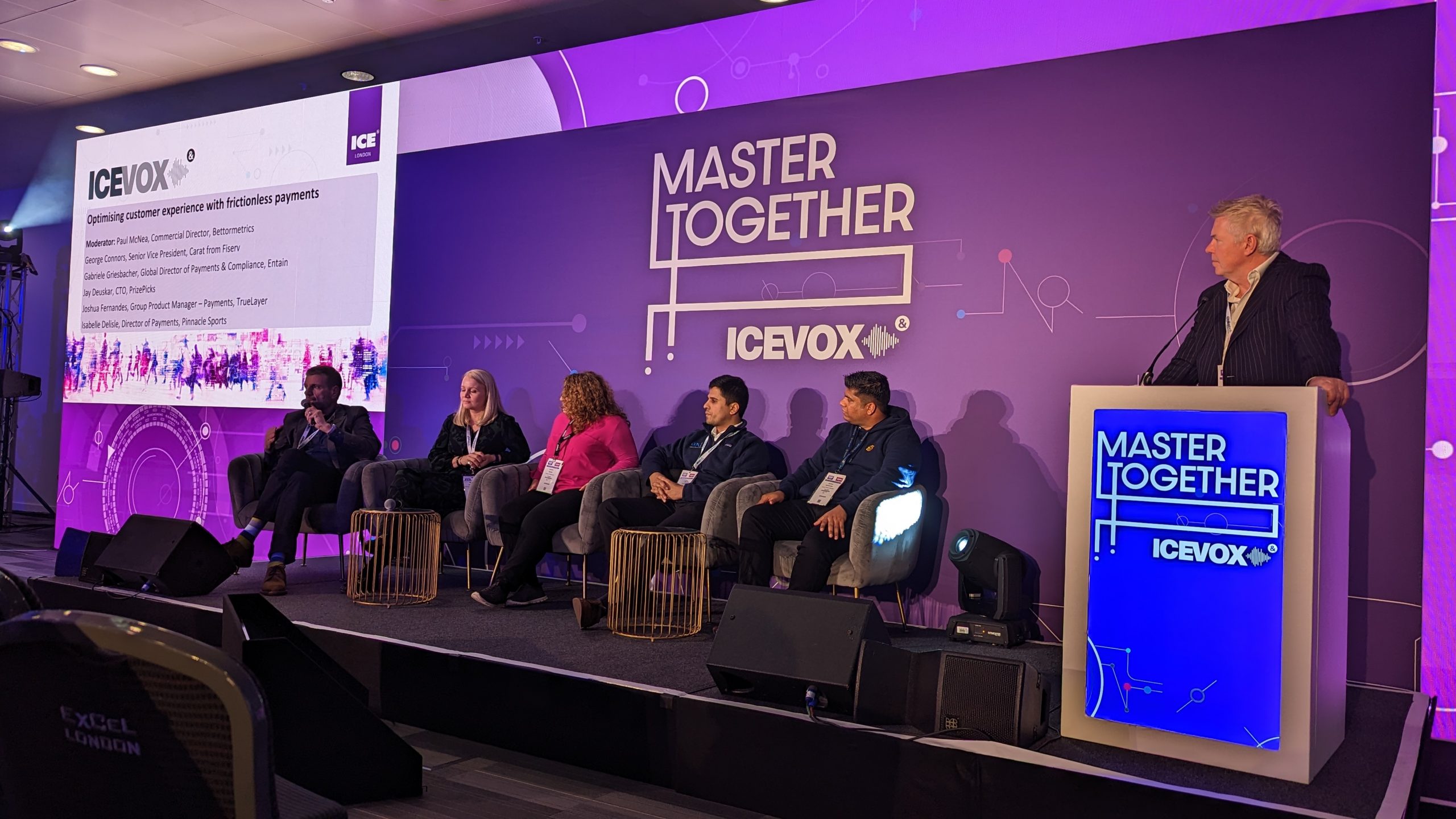The Future of Frictionless Payments

We’ve all had that experience online of going to buy a product, adding it to our baskets, heading to the checkout and then…ERROR! The page has vanished or the payment system is down. Please try again later.
The result?
We head quickly to another site and buy the product elsewhere.
In today’s world there is no room for slow payments with endless registration forms and multiple clicks.
So what is the solution for the gaming industry where regulation and customer safety around onboarding is absolutely paramount? This was the question facing the panel at ICE London’s Ice Vox.
Jay Deuskar, CTO of PrizePicks maintained that protecting against illegal payments was their company’s top priority.
“Regarding the customer experience, from signing up, registering, making their first transaction and starting to play on our platform, fraud operations and maintaining our fraud levels is probably the top concern for our payments team. But the key is keeping our fraud restrictions light at the top of the funnel and having a more robust system further down the funnel.”
Joshua Fernandes, Group Product Manager of Payments at TrueLayer, agreed that the first interaction was crucial to the ongoing relationship with the customer.
“Success of payments has a lot to do with the success of the onboarding flows. The biggest drop off happens at the time between the moment the user downloads the app. to the time they sign up. We need to increase automation in the onboarding process. If the first payment is a good experience then the next tends to follow.”
Gabriele Griestbacher, Global Director of Payments and Compliance at Entain highlighted partnerships with the payment providers as being absolutely key.
“It’s always a partnership. The better you manage the relationships with your payment suppliers, the better your overall performance.”
Isabelle Delisle, Director of Payments at Pinnacle Sports made the point that for global companies, this is even more vital.
“If you’re in multiple markets, you don’t always know the behavior in that particular country. Each one is different and customers may have a specific solution that they prefer to use. It might not be a Visa or a Mastercard. You can’t underestimate the expertise of local suppliers.”
With increased protection for consumers at the heart of payment solutions, what does the future hold and how does the industry maintain a great experience for customers?
Fernandes gave his insight. “Over the years, a lot of payments have been monopolized by cards – Visa and Mastercard – but we are beginning to see, particularly in Europe and the UK, the uptake of open banking. It’s cost effective for operators and is also useful for reducing fraud and making user verification a lot easier.”
Delisle was also keen to bring crypto into the conversation. “We can’t ignore the fact that crypto is a part of the industry. If we can ever regulate crypto then this will have a lot of benefits for customers. Of course there are challenges around protecting clients and companies but it would be a strong addition to the markets.”
George Connors, SVP and Head of Gaming and Sports at Fiserv maintained that better solutions will continue to evolve.
“What I’ve found over 20 years in this industry is that time fixes a lot of things. Back in the 90s the major brands like Visa and Mastercard were saying no. When igaming came in during 2018, they were saying no. But now it’s a yes. We always have to figure out ways to optimise what we have to work with. And as time goes on, brands are going to realise that we are not the big bad wolf. That we are getting better and better at what we do, which is providing a great service that people want to use.”
It’s clear that frictionless payments for customers, particularly during their onboarding process, is key to maintaining and growing the customer base. As technology continues to evolve, the gambling industry is once more at the forefront of developing new best practice whilst at the same time working hard to provide an ever better and more flexible user experience.
